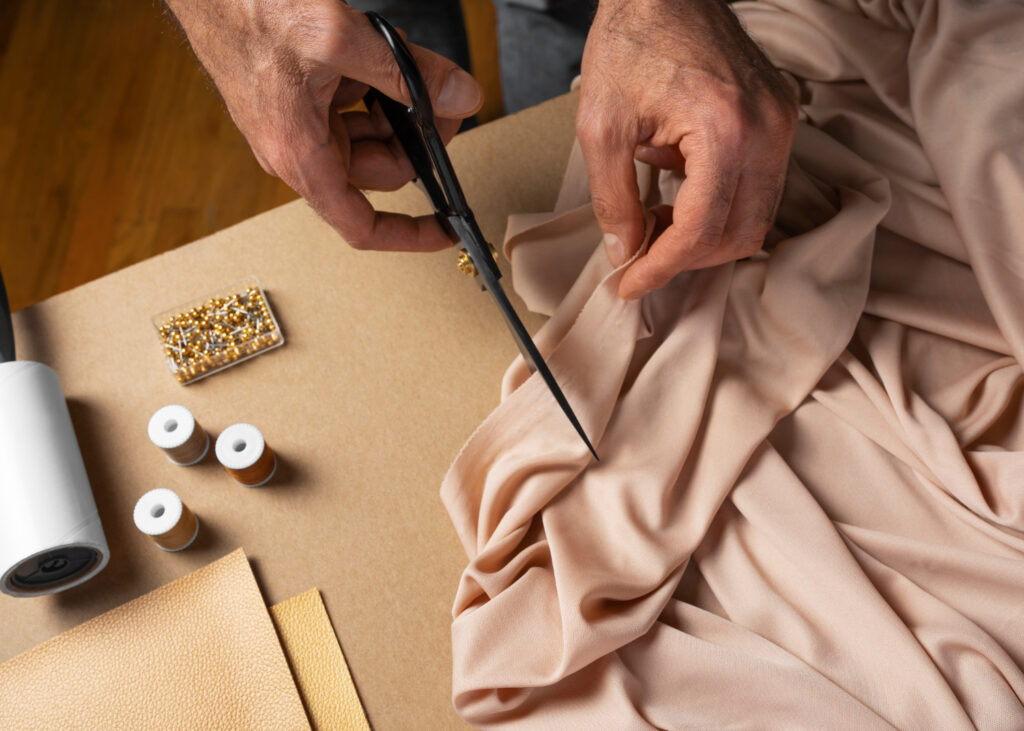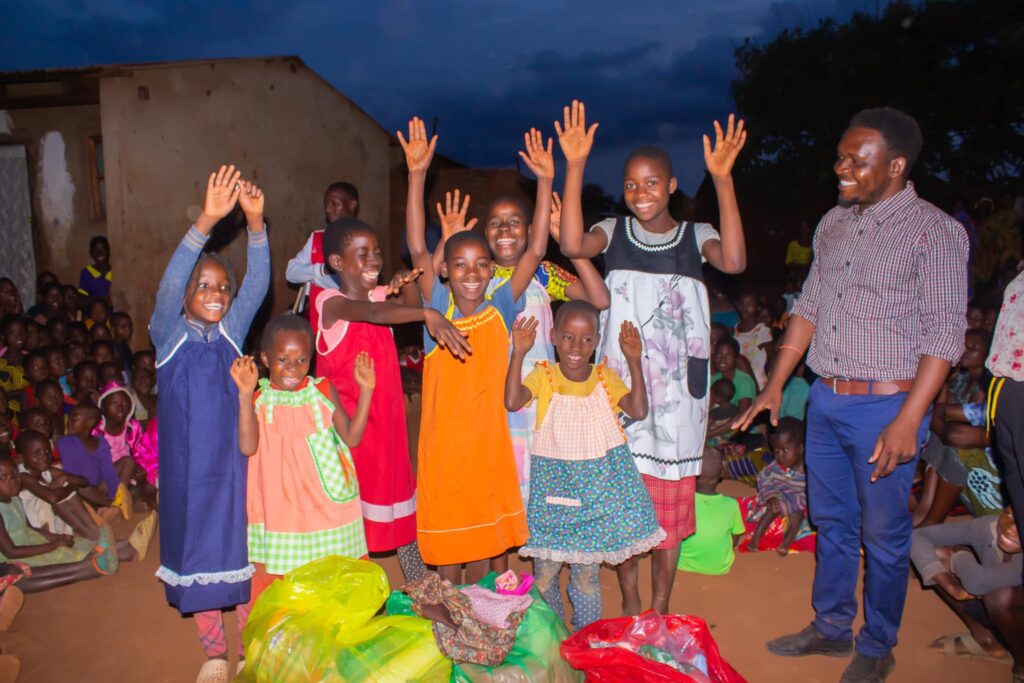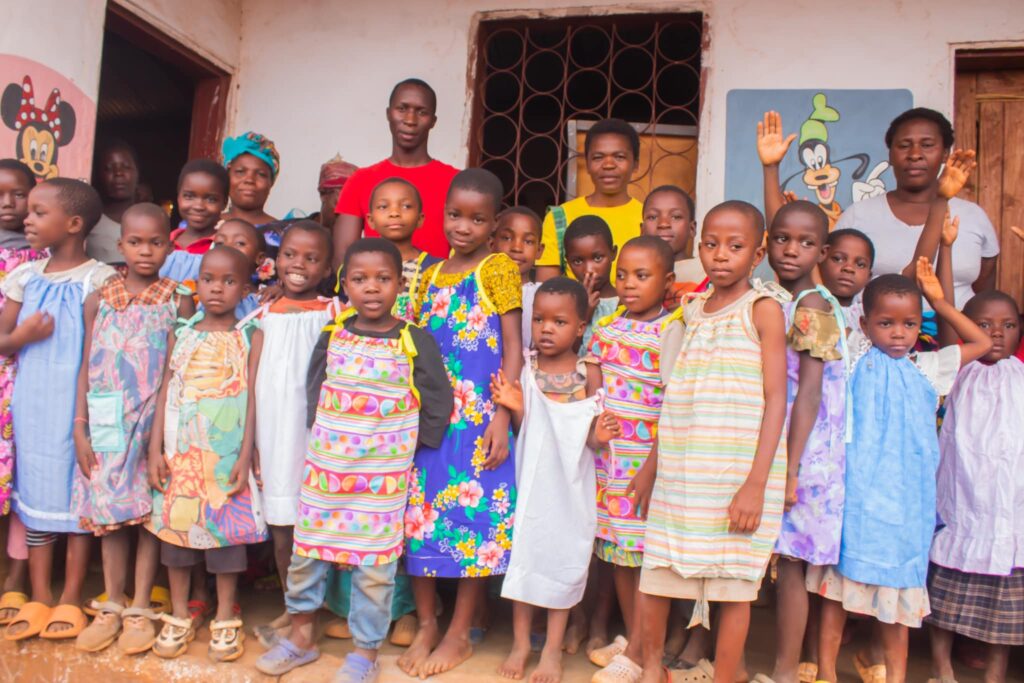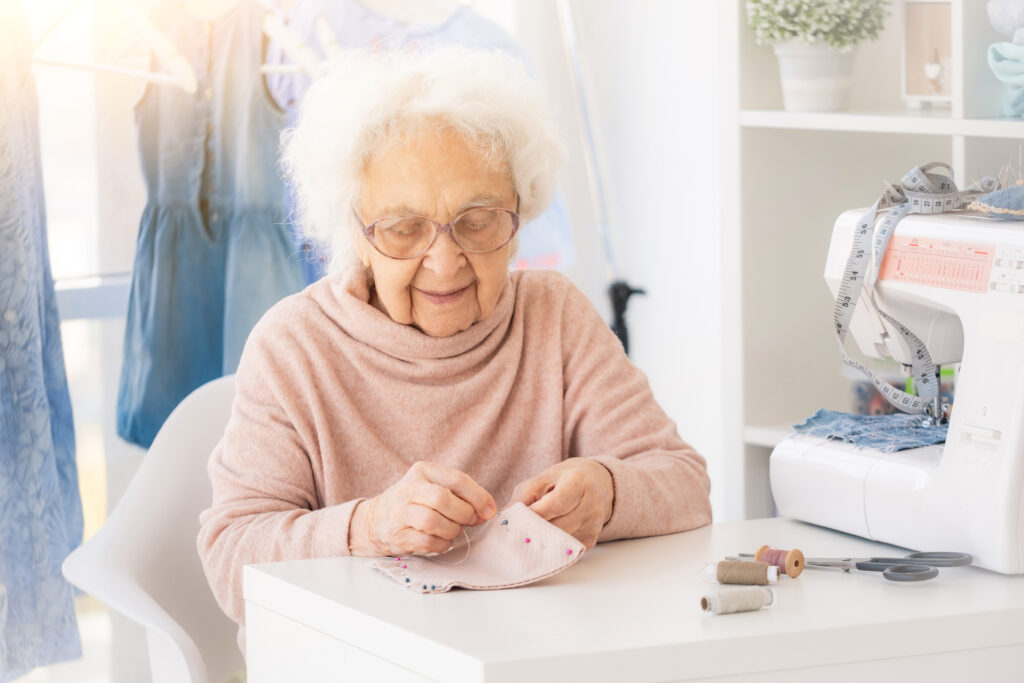99-Year-Old Woman Spends Every Day Sewing Dresses For Girls In Need Instead Of Retiring

What does a life of purpose really look like, especially when the world insists it’s time to slow down and fade quietly into the background? In a culture that measures success by noise and spectacle, the story of a 99-year-old woman from Iowa offered a gentler, truer answer. With nothing more than a sewing machine and a promise she made to herself, Lillian Weber created a ripple of kindness that reached across continents.
She showed that meaning isn’t confined to youth or achievement but is born in the steady rhythm of doing something that matters. Her dresses, stitched one by one in her farmhouse, became symbols of devotion acts of love disguised as fabric. Long after her passing, the legacy of her hands continues to remind us that purpose doesn’t retire. It evolves, deepens, and, if we let it, quietly changes the world.
The Seamstress with a Global Mission
Lillian’s mission had begun in 2011, after she watched a documentary about a small nonprofit called Little Dresses for Africa. She had been so deeply moved that she joined a local sewing group and soon became its heart and soul, setting for herself a remarkable goal: to sew 1,000 dresses by her 100th birthday.
It had never been just a hobby. It became her rhythm, the quiet pulse of her days. Each morning, she would begin a new dress, pause for lunch, and finish it by afternoon. That steady, humble routine became the heartbeat of her final years, each stitch a reminder that purpose can be found in repetition, patience, and care.
What made her work so extraordinary was the way she approached it. In a world driven by speed and efficiency, Lillian chose slowness. She often admitted she could have made two dresses a day, but she preferred to make only one. It wasn’t because she lacked energy it was because she believed meaning lives in intention. Every seam, every ribbon, every small detail carried the weight of her thoughtfulness, turning an act of sewing into an act of love.

The charity had suggested a simple pattern made from a pillowcase so that anyone could participate, but for Lillian, that had never been enough. She had chosen a more detailed design and, most importantly, made a promise to herself that every single dress would be unique. Her daughter, Linda Purcell, once said, “She had to put something on the front to make it look special, to give it her touch.”
A bit of lace here, a small animal patch there, a bright flower carefully stitched in place each detail was a quiet message to a child she would never meet. In a time defined by fast fashion and disposable things, Lillian’s work was the opposite: slow, deliberate, and overflowing with care. Every dress she made carried the same unspoken words across oceans and generations: You are not a number. You are special. You are seen. You are valued. And you are worthy of something beautiful.
More Than a Dress: A Symbol of Hope

To truly understand the depth of Lillian’s work, you have to look at the organization she devoted herself to. Founded in 2008 by Rachel O’Neill, Little Dresses for Africa runs on a disarmingly simple idea: “We’re not just sending dresses, we’re sending hope.” A dress, in their mission, was never just fabric and thread. It was a tangible gesture of love, a token of dignity that helped build trust and open the door to bigger, lasting change in communities across 97 countries. It was a way of saying, We see you, before any other form of help could begin.
The dresses were only the first step the friendly handshake that led to transformation. Through the relationships built by those small garments, the organization went on to dig clean water wells, construct schools, and create Dignity Programs for teenage girls, providing reusable sanitary products that fundamentally changed their lives.
In this larger movement of compassion, Lillian’s hands had been part of something vast. Her careful stitches didn’t just clothe children they helped lay the fabric of opportunity, dignity, and hope that continues to spread long after her passing.

In many parts of the world, a girl’s period means losing a week of school every month a small absence that grows into a life-altering gap. Over time, it becomes a cycle of falling behind until she drops out completely. The Dignity Kits provided by Little Dresses for Africa break that cycle. They restore not only comfort and hygiene but also dignity and opportunity. Each kit keeps a girl in the classroom, giving her the chance to continue learning and to shape her own future.
A new dress, too, can mean more than anyone might imagine. Founder Rachel O’Neill has seen firsthand that when a child looks cared for when she’s dressed in something clean, bright, and made with love she’s far less likely to be targeted by traffickers or predators. The dress becomes an invisible shield, a quiet signal that this child is not forgotten, that someone, somewhere, is watching out for her.
Lillian’s 1,234 dresses became part of that shield threads in a global tapestry of safety, dignity, and hope. They joined a movement that has now delivered over 11 million dresses across the world. Each one carries the same unspoken promise: that every child deserves not only to survive but to be seen, protected, and given the chance to thrive.
The Life-Sustaining Power of Purpose

While Lillian’s story was rooted in giving, science reveals that she was also receiving something profound in return. Her daily mission was a living example of what researchers have confirmed again and again: volunteering, especially in later life, doesn’t just make the world better it transforms the volunteer. This wasn’t about simply keeping busy; it was a genuine, measurable health boost that reshaped how she aged.
Study after study has shown that older adults who volunteer tend to live longer, maintain lower blood pressure, and remain physically capable far beyond their peers. The body responds to purpose the way plants respond to sunlight it thrives. But the mental and emotional rewards are even more striking. Purposeful, focused activity like Lillian’s sewing provides structure, meaning, and a sense of control. It’s a natural antidepressant, a counterweight to loneliness, and a proven shield against anxiety.
For Lillian, those hours at her sewing machine weren’t just acts of kindness; they were acts of vitality. Every stitch was a thread connecting her to life itself proof that when we invest our energy in others, we often end up strengthening our own hearts in the process.

Why does this happen? Researchers point to a few deeply rooted human needs that volunteering so beautifully satisfies. The first is purpose. When the roles that once defined us our jobs, our responsibilities, even our identities begin to fade, purpose can slip quietly away. Volunteering restores it. It gives structure to the day and proof that one’s presence still matters. For Lillian, every morning began with intention: another dress, another act of meaning. Her sewing table became a compass pointing her toward usefulness, pride, and belonging.
The second need is connection. Even though Lillian often worked alone in her farmhouse, she was never isolated. Each stitch linked her to a vast network of people other volunteers, the children who would wear her dresses, the communities that would receive them. That invisible web of shared compassion protected her from the loneliness that erodes both body and mind. It reminded her, and reminds us all, that we are meant to live in relation to one another.
And then there’s the “helper’s high.” Scientists use that phrase to describe the cascade of endorphins and feel-good chemicals released in the brain when we help someone else. It’s nature’s reward system for kindness. Lillian often said her sewing gave her a reason to get up in the morning and kept her out of a nursing home a statement backed by biochemistry as much as sentiment.
In her life, a beautiful loop took shape: she gave her time, her creativity, her care, and in return, that giving gave her vitality. Each dress was a quiet exchange between her heart and the world a reminder that purpose and joy are renewable resources, sustained by acts of love.
A Legacy Stitched in Thread

Lillian Weber hit her goal of 1,000 dresses in March 2015, just two months before her 100th birthday. But for her, the number was never the point it was simply a stop along the road, a quiet milestone she passed before turning her eyes toward the next horizon. By the time her birthday arrived, she had already completed 1,051 dresses.
She didn’t linger long to celebrate. Her focus was always forward the next dress, the next child, the next small act of love. “I won’t quit,” she said. “I’ll go at it again because there’s no reason to not do nothing.” Inside that simple, folksy double-negative lived a profound truth: find your purpose, and refuse to be idle in pursuing it. Lillian’s steady determination was her gentle rebellion against the notion that aging meant fading away. She passed away peacefully on May 5, 2016, the night before her 101st birthday. Just days earlier, she had finished her 1,234th dress. Even at the end, her hands remained busy, her heart still open, her purpose unshaken.
Lillian’s story stands as a powerful refutation of the tired stereotype that older people are no longer active or capable of contributing. She was living proof that purpose does not have an expiration date, that the drive to give and create can remain fierce and beautiful until the final breath. Her legacy isn’t only stitched into the thousands of dresses she made it lives in the quiet, luminous example of a woman who showed that the simplest acts, done with devotion, can echo louder than any speech about the strength, dignity, and beauty of the human spirit.
What is Your Dress to Sew?
It’s easy to look at the enormity of the world’s problems and feel small to believe that one person’s effort can’t possibly make a dent. But Lillian Weber’s story silences that doubt. Her life is a quiet, enduring answer to the question of whether one person can make a difference. It reminds us that the biggest changes rarely begin with a roar. More often, they start with a whisper with one small, steady act of love, repeated faithfully day after day.
Lillian showed that purpose isn’t something you stumble upon in a single epiphany. It’s something you build, one stitch, one choice, one act of kindness at a time. Her life leaves each of us with a question that lingers long after her story ends: What is your dress to sew? What small, good thing can you commit to doing, not once, but over and over again, until it shapes the world around you?
Your “dress” might not be made of fabric. It could be something as simple as taking time to really listen to a lonely friend, spending a few minutes each morning learning something new you can one day share, or writing a note that lets someone know they matter. It might be planting something that outlives you, sharing a story that offers hope, or choosing to bring calm into chaos.
None of these things will make headlines but they don’t need to. Real change doesn’t require noise; it requires heart. Lillian found her purpose at a sewing machine in her Iowa farmhouse, transforming fabric into hope until the very end of her days. Her legacy asks us not to look for something grand to do, but to do something small with great love. The question she leaves behind is not rhetorical it’s a challenge: Where will you find your purpose? And when will you begin?
Loading...

